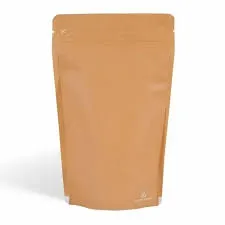- Afrikaans
- Albanian
- Amharic
- Arabic
- Armenian
- Azerbaijani
- Basque
- Belarusian
- Bengali
- Bosnian
- Bulgarian
- Catalan
- Cebuano
- chinese_simplified
- chinese_traditional
- Corsican
- Croatian
- Czech
- Danish
- Dutch
- English
- Esperanto
- Estonian
- Finnish
- French
- Frisian
- Galician
- Georgian
- German
- Greek
- Gujarati
- haitian_creole
- hausa
- hawaiian
- Hebrew
- Hindi
- Miao
- Hungarian
- Icelandic
- igbo
- Indonesian
- irish
- Italian
- Japanese
- Javanese
- Kannada
- kazakh
- Khmer
- Rwandese
- Korean
- Kurdish
- Kyrgyz
- Lao
- Latin
- Latvian
- Lithuanian
- Luxembourgish
- Macedonian
- Malgashi
- Malay
- Malayalam
- Maltese
- Maori
- Marathi
- Mongolian
- Myanmar
- Nepali
- Norwegian
- Norwegian
- Occitan
- Pashto
- Persian
- Polish
- Portuguese
- Punjabi
- Romanian
- Russian
- Samoan
- scottish-gaelic
- Serbian
- Sesotho
- Shona
- Sindhi
- Sinhala
- Slovak
- Slovenian
- Somali
- Spanish
- Sundanese
- Swahili
- Swedish
- Tagalog
- Tajik
- Tamil
- Tatar
- Telugu
- Thai
- Turkish
- Turkmen
- Ukrainian
- Urdu
- Uighur
- Uzbek
- Vietnamese
- Welsh
- Bantu
- Yiddish
- Yoruba
- Zulu
card stock thickness
Understanding Card Stock Thickness A Key Factor in Quality Printing
When it comes to printing, whether for business cards, flyers, or brochures, one of the most critical elements often overlooked is card stock thickness. This characteristic can significantly affect the final product's durability, appearance, and functionality. Therefore, understanding card stock thickness is essential for selecting the right materials for your printing projects.
What is Card Stock?
Card stock is a type of thick paper that falls between regular paper and cardboard in terms of weight and thickness. It is commonly used for a variety of applications, including business cards, invitations, greeting cards, and postcards. The thickness of card stock is typically measured in points (pt) or grams per square meter (GSM). One point is equivalent to 0.001 inches, while GSM refers to the paper's density.
Measuring Card Stock Thickness
When measuring card stock thickness, it’s vital to understand the different scales. Card stock weighs anywhere from 14 pt (about 0.014 inches) to 130 pt (approximately 0.130 inches) or more. For example, a standard business card usually falls between 14 pt and 24 pt, while greeting cards often use thicker stock ranging from 30 pt to 40 pt. On the other hand, packaging materials might require stock as thick as 80 pt or more for added durability.
GSM is another metric commonly used. The higher the GSM, the thicker and denser the card stock. A typical range for card stock is around 200-400 GSM, depending on the application. For example, business cards often use around 300-350 GSM, offering a good balance of sturdiness and flexibility.
Why Does Thickness Matter?
1. Durability Thicker card stock is generally more durable and able to withstand wear and tear. This is particularly important for items like business cards, which might be handled frequently. A thick card stock can resist bending, tearing, and other forms of damage better than its thinner counterparts.
card stock thickness

2. Presentation The thickness of card stock can significantly impact the aesthetic quality of printed materials. Thicker stock often conveys a sense of luxury and professionalism, making it ideal for high-stakes business transactions or special occasions. When clients receive a sturdy business card, they often perceive the sender as more credible and established.
3. Print Quality The thickness and texture of card stock also affect how ink interacts with the surface. Thicker stocks can absorb ink differently than thinner stocks, leading to variations in color vibrancy and detail sharpness. Choosing the right thickness ensures that the final printed output matches your vision.
4. Functionality Depending on the intended use, card stock thickness can play a functional role. For example, if you are creating a table tent or a stand-up display, you'll want to use thicker stock for the necessary structural integrity. Conversely, if you are printing a flyer that will be folded and distributed, a thinner stock may be appropriate to facilitate easy folding.
Choosing the Right Card Stock Thickness
When selecting card stock, consider the following factors
- Purpose of the Print Determine how the printed material will be used and its required durability. - Budget Thicker stocks typically cost more, so align your choice with your budget constraints. - Printing Method Certain printing methods work better with specific thicknesses. Always check with your printer regarding compatibility. - Personal Preference Ultimately, choose a thickness that aligns with your personal or brand identity. The tactile feel of the material can influence perceptions in ways that visuals alone cannot.
Conclusion
Card stock thickness is an essential consideration in the printing process that can influence durability, aesthetics, print quality, and functionality. Whether you're designing business cards or promotional materials, understanding and selecting the appropriate card stock thickness will enhance the overall effectiveness of your printed product. By investing time in this decision, you'll ensure that your materials not only look impressive but also perform well in their intended contexts.













